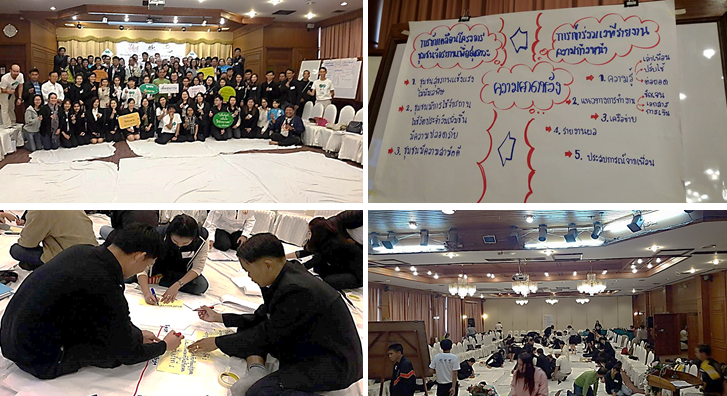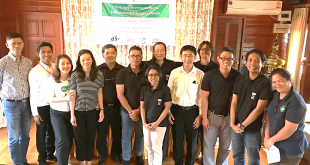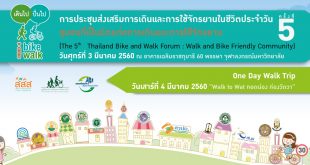
Bike Community for Health Project Year 2: Mid-project review for the Northern Region
Thai Health Promotion Foundation (THPF) join force with Thailand Cycling Club (TCC) to promote cycling as a mean of transport in daily life. THPF and TCC decided to continue with the Bike Communities for Health Project. In its second year, a total of 99 communities from all four main regions of Thailand have been selected to receive a grant from THPF with TCC to do monitoring work and provide capacity building supports.
This second year project, which commenced in July 2016, is now half way of its operation. TCC therefore is organizing a series of four workshops at regional level for project partners to discuss progress of their operation, learn from each other and make improvements to better achieve their objectives and targets. The first regional workshop/forum for sub-projects in the Northern Region and Upper Central Region took place on December 16-18, 2016, at a hotel in Phrae Province.
As a whole, it is found that the Bike Communities for Health Project has raised awareness of people in the target communities on cycling as a means of daily transport. With campaign activities, local people who had used to use bicycle more in the past have brought out their bikes to use again. Local sub-project holders have built partnership with others, individuals and organisations, to make project implementation more effective and increase their impacts. They also collected data about bicycle users in the community, such as how and why they used (or did not use) it. This information then was used to design campaign, education and promotion activities that were suitable for the community people’s way of life and responding to their needs and concerns.
It is normal that operation of this project would face problems, obstacles and restrictions, and had some shortcomings, such as design of activities was not corresponding to objectives of the project, data from the community was not well used, cycling activities were not effective in promoting cycling in daily life, and the environment/circumstances were not conducive for cycling promotion, such as people feel that it is still not safe to use bicycle as alternative mode of transport. These negative factors/elements were analysed and outcomes were used to improve project operation for better achievement.
At the same time, sub-projects in several areas/communities were interestingly successful or making much progress. Three examples are below:
- A cycling club in Kok-raet sub-District, Kongkrailat District, Sukothai Province, chose students as its primary target. It successfully advocated teachers and parents of all three secondary schools in the area to forbid students from riding motorcycle to school, using safety concern to rationalize their proposition. A next step is to conduct campaign to encourage students to walk or bike to school.
- Mueang Kaen Patthana Town Municipality in Inthakhin Sub-District, Mae Taeng District, Chiang Mai Province, surveyed local people’s needs for bicycle. It then invested in purchasing used bicycles and allowed local people to easily acquire them by paying in installments. More than 80 bicycles have already been sold this way and 200 more are in demand. Before handing these bicycles to resident buyers, the municipality had them attend in a ‘Bicycle Clinic’ of which bicycle maintenance and repair were taught. Mayor of the municipality also declared Wednesday as ‘Bicycle day’, requiring more than 1,000 personnel of the municipality to bike to work every Wednesday and inviting other people to use bicycle as a means of transport on Wednesday as well.
- Hadsiew Sub-District Municipality in Srisatchanalai District, Sukhothai Province, set a goal to turn Had Soong village on the banks of Yom River to be a pilot community for promotion of cycling in daily life, becoming an example for other communities, because roads and other physical structures within the community are suitable for using bicycles. Highlight of this community is elderly people who provide leadership, acting as example in using bicycle to do all kinds of activities in their daily life.
Reported by staff team of the Bike Communities for Health, Thailand Cycling Club
 ชมรมจักรยานเพื่อสุขภาพแห่งประเทศไทย ชมรมจักรยานเพื่อสุขภาพแห่งประเทศไทย
ชมรมจักรยานเพื่อสุขภาพแห่งประเทศไทย ชมรมจักรยานเพื่อสุขภาพแห่งประเทศไทย


